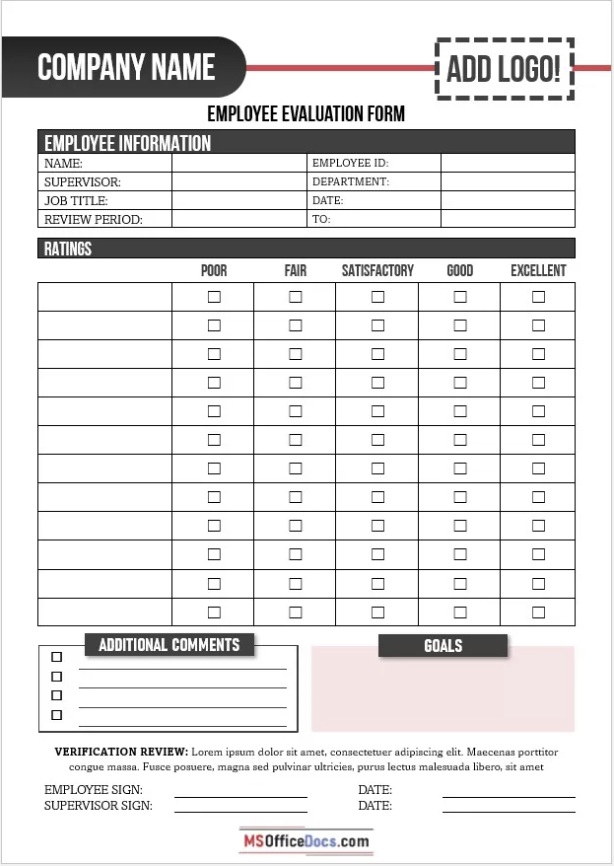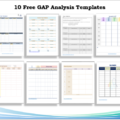Whether in a business or a charity organization, there may be tens or hundreds of people working there. Most businesses tend to choose employees from within for advanced positions, however, this is not an easy task at all. Each and every employee who is to be promoted or whose salary is to be increased has to be reviewed so as not to make any one of them unhappy about their wages. It is much easier to give a pay rise to an employee who has performed well throughout the year than one who has had performance challenges. Performance of every employee, where they are in terms of progress, and further improvement to be made with respect to their professional level is evaluated through filling up employee evaluation forms by those in charge of them.
Key Elements of Employee Evaluation Form:
- Name of the employee
- Designation and department of the employee
- Date of the evaluation
- Evaluation period i.e. from Jan 2020 to June 2020
- Name of the evaluator
- Designation of the evaluator
- Evaluation criteria
- Earned performance points
- Total earned points
- Overall performance of the employee
Free Employee Evaluation Forms:
Here are previews and download buttons for these Free Employee Evaluation Forms. You can download any of them and edit them according to your preferences.

Download these Free Employee Evaluation Forms Online.
Market Practices of Employee Evaluation Form:
- Add relevant details about the employee:
This is pretty basic stuff that, when an employee is being evaluated, their complete details should be added to the appraisal or performance review form. This evaluation form should include the full name of the employee, his tracking ID or employee code, designated,n and the department he works in, the name of his supervisor and HOD, and his employment duration. Some of the organizations prefer to add how each employee started their career at the company and where they stand currently. - Choose evaluation criteria points:
It depends on your company and type of business, and which features of an employee matter to you the most. For instance, generally, employees need to arrive at the office on time, but some companies don’t have any policy about when employees should arrive as long as they complete 7 hours of duty time. This means you need to define your evaluation criteria that include the characteristics that you prefer, including job performance, job knowledge, technical experience, critical thinking, dependencies, teamwork, punctuality, following guidelines, and communication skills. - Employee’s performance summary:
This is the part of the evaluation form where the supervisor or manager talks about what strengths and weaknesses the employee has or what he can do to improve his performance, or if he needs additional training to perform better. This part can be considered as recommendations of the supervisor for each employee. There is no myth that a supervisor usually knows his employees very well, and even if he doesn’t show it off, he knows which employee has what weaknesses and which employee is better with technical work or creative thinking. - Mentioninga specific duration of evaluation:
One of the most important things not to forget while creating an employee evaluation form is to mention the duration of the evaluation. Usually, organizations prefer to run these evaluations once or twice a year, and it happens mostly before promoting or increasing salaries. Because these evaluation forms are put in the permanent record of the employees, they should specify the duration of time of the evaluation, i.e. 1st evaluation was done on 1st June 2019 for the period of Jan-June 2019, and the 2nd evaluation was done on 1st Jan 2020 from June 19 to Jan 2020. - Getting feedback from employees:
When the supervisor or manager evaluates each employee and fills out the evaluation forms, it’s enough, but professional organizations understand the role each employee plays in the evaluation and betterment of the workforce. For that reason, before the form is filled by the supervisor, the employees are asked to fill out their evaluation portion where they are asked to talk about the strengths they have, weaknesses they are aware of, how they see their performance, how they can improve it and what they feel about the responsibilities they have.
